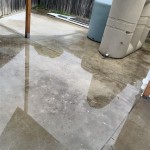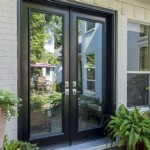Eliminating Moss From Brick Patios – A Guidebook
Moss growth on brick patios is a common issue, particularly in damp, shaded environments. While moss can lend a certain aesthetic charm, it often poses several problems. These include creating slippery surfaces, accelerating brick degradation, and fostering an environment conducive to other undesirable growths. This guidebook provides comprehensive strategies for eliminating moss from brick patios and preventing its recurrence, ensuring the longevity and safety of the paved surface.
The success of moss removal hinges on understanding the factors that contribute to its growth. Moss thrives in damp, shady conditions with poor drainage. Overhanging trees, north-facing patios, and areas prone to water accumulation all contribute to a favorable environment for moss proliferation. Addressing these underlying conditions is crucial for long-term moss prevention. Ignoring these factors and solely focusing on surface treatment provides only temporary relief and necessitates repeated intervention.
Identifying Moss and Assessing the Infestation
Accurate identification of the growth as moss is the first step. Moss is a non-vascular plant that typically appears as a green, velvety carpet on surfaces. It lacks true roots and instead anchors itself with rhizoids. Distinguishing moss from other growths like algae or lichens is important because different organisms might require different treatment methods. Algae often appears as a slippery, green film, while lichens are typically crusty or leafy and firmly attached to the brick.
Once identified as moss, assessing the extent of the infestation is critical. A light covering might only require superficial treatment, while a dense, established growth will demand a more aggressive approach. Note areas where moss growth is particularly prevalent. This pinpointing will help discern areas with poor drainage or excessive shade. Photographs documenting the infestation's severity and location are a helpful resource for tracking progress and planning future preventative measures.
Effective Moss Removal Techniques
Several methods are available for removing moss from brick patios, ranging from manual techniques to chemical treatments. The choice of method depends on the severity of the infestation, the type of brick, and environmental considerations. It is always prudent to begin with the least aggressive method and escalate as needed.
Manual Removal: This involves physically removing the moss using tools such as a stiff-bristled brush (ideally with plastic bristles to avoid scratching the brick), a putty knife, or a pressure washer. For light infestations, scrubbing with a brush and water may be sufficient. A putty knife can be used to scrape away thicker patches of moss. When using a pressure washer, exercise caution to avoid damaging the brick or mortar joints. Use a wide fan nozzle and maintain a safe distance to prevent erosion. Manual removal is labor-intensive but avoids the use of chemicals and is suitable for small areas or environmentally sensitive locations.
Chemical Treatments: Several chemical treatments are effective against moss. These include solutions containing ingredients such as ferrous sulfate (iron sulfate), zinc sulfate, or potassium salts of fatty acids. Ferrous sulfate is a common and relatively inexpensive option, but it can stain brick if not applied carefully. Zinc sulfate is less likely to stain but may be more toxic to plants. Potassium salts of fatty acids are considered more environmentally friendly. Always follow the manufacturer's instructions carefully when using chemical treatments. Wear appropriate personal protective equipment, including gloves, eye protection, and a respirator if necessary. Apply the solution evenly to the affected area and allow sufficient contact time before rinsing. Repeat applications may be necessary for stubborn infestations.
Homemade Solutions: Some homeowners opt for homemade solutions as a less toxic alternative. A mixture of white vinegar and water (typically a 1:1 ratio) can be effective against moss. Another option is a solution of baking soda and water. Apply the solution to the moss, allow it to sit for several hours, and then scrub or rinse away. While these solutions are generally safer than commercial chemical treatments, they may be less effective for heavy infestations. It's advisable to test any homemade solution on a small, inconspicuous area of the patio first to ensure it does not discolor or damage the brick.
Regardless of the chosen removal method, proper preparation is essential. Clear the patio of any furniture, planters, or other objects. Sweep away loose debris and leaves. If using a liquid treatment, ensure the patio surface is dry. After treatment, thoroughly rinse the patio with water to remove any residue. Allow the patio to dry completely before replacing furniture or allowing foot traffic.
Preventing Moss Recurrence: Long-Term Strategies
Preventing moss recurrence is as important as removing it in the first place. Address the underlying conditions that promote moss growth to minimize the need for repeated treatments. Several strategies can be employed to create an environment less hospitable to moss.
Improve Drainage: Poor drainage is a primary contributor to moss growth. Ensure the patio has adequate drainage to prevent water from pooling on the surface. Check for clogged drains or gutters and clear them as needed. Consider regrading the patio to promote better water runoff. If the patio is surrounded by soil, ensure the soil level is not above the brick surface, as this can trap moisture. Adding a layer of gravel or crushed stone around the perimeter of the patio can also improve drainage.
Increase Sunlight: Moss thrives in shady environments. Prune overhanging trees or shrubs to allow more sunlight to reach the patio. Consider removing or relocating plants that are casting excessive shade. Reflective surfaces, such as light-colored gravel or paving stones near the patio, can also help increase light levels. While complete sun exposure may not be achievable, reducing the amount of shade can significantly inhibit moss growth.
Maintain Patio Cleanliness: Regularly sweep or blow off the patio to remove leaves, debris, and organic matter. These materials provide a substrate for moss to grow on. Periodic cleaning with a stiff-bristled brush and water can also help remove moss spores and prevent them from establishing. Consider using a patio cleaner specifically designed for brick surfaces. Avoid using harsh chemicals or abrasive cleaners that can damage the brick or mortar joints.
Apply Preventative Treatments: Even with improved drainage and increased sunlight, moss may still attempt to recolonize the patio. Apply preventative treatments periodically to inhibit moss growth. Solutions containing copper sulfate or zinc sulfate can be effective, but use them sparingly and follow the manufacturer's instructions carefully. Consider using a sealant specifically designed for brick patios. Sealants can help prevent moisture from penetrating the brick, making it less hospitable to moss. Choose a breathable sealant that allows moisture to escape from the brick to prevent damage.
Consider Alternative Ground Cover: In areas where moss is particularly persistent despite preventative measures, consider replacing the brick with an alternative ground cover that is less susceptible to moss growth. Options include gravel, crushed stone, or permeable pavers. These materials allow for better drainage and do not provide a suitable surface for moss to establish.
Maintaining a moss-free brick patio requires a comprehensive approach that addresses both immediate removal and long-term prevention. Regular maintenance, attention to drainage and sunlight, and the judicious use of preventative treatments are all essential components of a successful strategy. By implementing these practices, homeowners can maintain the beauty and safety of their brick patios for years to come.

How To Remove Moss And Mold From Brick Stone Pavers

How To Stop Moss Growing On Brick Paving S Pavers

Brick Patios The Pros And Cons Of Choosing For Outdoor Flooring

How To Remove Moss And Mold From Brick Stone Pavers

2024 Paver Cleaning And Resealing Cost Angi

Brick Paver Patios

Brick Paving 6 Ways To Improve Tired Areas Making Home

How To Remove Weeds Between Bricks Without Herbicides Empress Of Dirt

Design Snapshot Brick Paving Pointers Fine Homebuilding

Brick Patios The Pros And Cons Of Choosing For Outdoor Flooring
Related Posts








